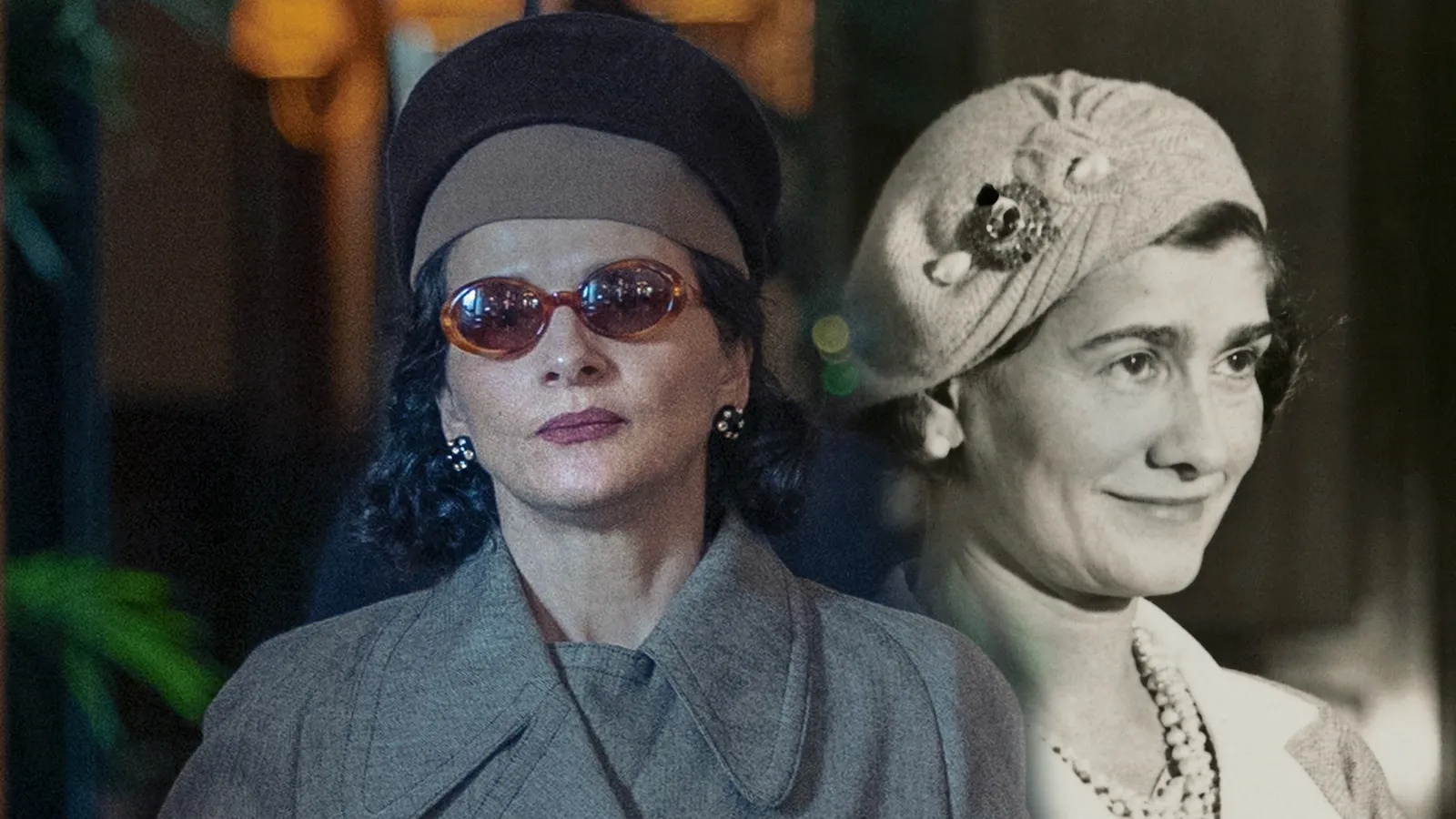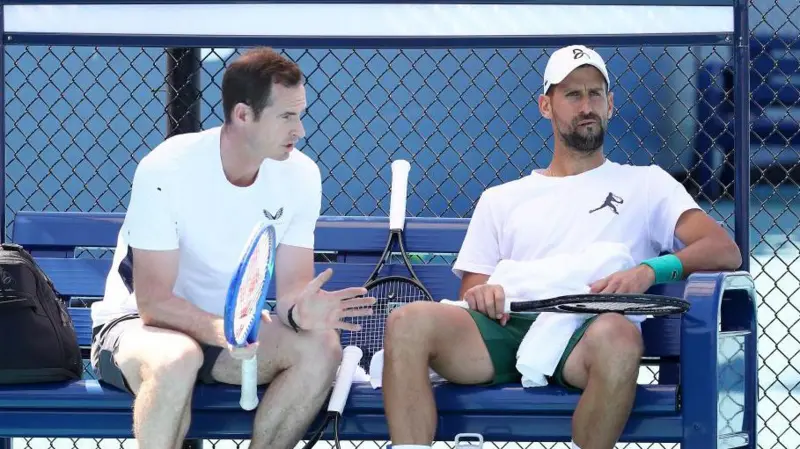The truth about Coco Chanel and the Nazis
Apple TV+'s new historical series The New Look traces the story of Coco Chanel and Christian Dior during the German Occupation of France in WW2. But how much does it get right – and wrong?

Coco Chanel's imagination was boundless. In the 1910s she created clothes with simple lines in comfortable jersey fabric, freeing women from their corsets, and later gave the world the little black dress and the classic perfume Chanel No 5. She was a master of self-invention, too. She refused to acknowledge her impoverished childhood, which saw her raised by nuns after her mother died and her father abandoned the family. After her success, she paid her two brothers, who would have embarrassed her with their lowly status, to keep quiet about her. A survivor and a pragmatist, she was prone to telling tall tales about her life, but this fact about her is irrefutable: she definitely collaborated with the Nazis. She may also have helped the French Resistance. The woman so determined to control her image and legacy left a messy tangle behind.
The New Look, the vibrant new Apple TV+ series about Christian Dior and Chanel during World War Two, delves into Chanel's collaboration, putting, perhaps, the least-bad spin on it. In a show full of dialogue that drips with significance, no line is more pointed than Dior's (Ben Mendelsohn) reply to a Sorbonne student in 1955, when he was the reigning star of fashion, who asks him to justify why he designed for Nazi wives and girlfriends during the German Occupation of Paris while Chanel (Juliette Binoche) closed her fashion house. "There is the truth," he says, "but there is always another truth that lives behind it." The series, which soon flashes back from 1955 to the war years, is surely fiction, inspired by history. But it accurately points to the truth of two very different responses to the war.
It's too easy to say Chanel was a Nazi – Justine Picardie
Dior's truth is simpler. He was steadfastly loyal to France. He kept designing for Nazis in order to make a living and survive, and used the money to support the heroic Resistance efforts of his sister, Catherine (Maisie Williams), who was eventually captured, tortured and imprisoned in a labour camp. Catherine Dior's little-known history may be the series' great discovery and most affecting element.
Chanel's reality is murky in its details and the subject of vastly different interpretations even now. It is well known that she had a long affair with a Nazi agent, Hans Günther von Dincklage, known as Spatz (Claes Bang in the show). He and other Nazi contacts helped get her beloved nephew, André, a member of the French army, released from a German prison camp. And there is no doubt that that she was involved in Operation Modelhut (Model Hat). This was a ludicrous scheme in which a rogue Nazi general enlisted Chanel to travel to neutral Madrid in the hopes of getting a message to her old friend Winston Churchill, suggesting they negotiate an end to the war, blithely ignoring Hitler. Her code name was Westminster, a nod to her strong connections to Britain and likely to her decade-long affair, beginning in the 1920s, with the Duke of Westminster. She also tried, unsuccessfully, to use the Nazi's Aryan laws preventing Jews from owning businesses to try to take control of her perfume company from her Jewish partners.
Some biographers and historians have vilified her for all this, including the late Hal Vaughan in a lurid 2011 book called Sleeping with the Enemy: Coco Chanel's Secret War. Rhonda Garelick, one of the most careful and astute of Chanel biographers, concludes in Mademoiselle: Coco Chanel and the Pulse of History (2014), that she probably believed in the Nazi cause, and was also motivated by expedience, self-interest and antisemitism. "Patriotism had always meant less to her than power," Garelick writes, and says, "Never did she acknowledge the implications of having tried to invoke the heinous Nazi Aryanisation laws against her own business partners."
However Justine Picardie, whose Coco Chanel: The Legend and the Life was published in a new edition last year, and who has also written a biography of Catherine Dior called Miss Dior (2021), tells BBC Culture, "It's too easy to say Chanel was a Nazi." Picardie believes Chanel was too much of an Anglophile and believed too strongly in freedom for her to embrace Nazism, even if she expeditiously used Nazi connections. Operation Modelhut, Picardie says, "is intriguing, but it doesn't really define her".
A complicated legacy
The New Look has its own angle, suggesting that Chanel's collaboration, apart from using the Aryan laws, was mostly reluctant. (She is, after all, a lead character, and they are rarely pure villains.) Our first wartime view of her, in 1943, has her dramatically arriving in the dark of night to get André out of the camp, distraught and frantic, desperate to save her nephew, a sympathetic figure. In this fictional world, she has relied on a Nazi-collaborating friend, Baron Louis de Vaufreland, to arrange the release, and had not fully thought through the consequences. But the Baron soon insists she has to meet Spatz, or he himself will be in danger, and Chanel's affair with Spatz begins. She is not only willing but quite besotted, oddly naive about his intentions. But she is also increasingly backed into a corner, strong-armed and threatened into joining Operation Modelhut, which she fiercely resists.
It’s not inspiring to write villains or heroes. What's inspiring is to explore the grey, because that brings me closer to an understanding of the characters - Todd Kessler
In real life, Chanel's relationship with Spatz began much earlier, in 1941, likely as a calculated, open-eyed effort to help get her nephew released. Picardie says, "I think she would've done anything to save him. And that is when she starts having an affair [with Spatz]." It took 18 months, though, before the right Nazi connections worked to release André. Most biographers agree that freeing André was likely the original motive for her collaboration. But over time, as Garelick writes, "Chanel went beyond the call of family duty in her efforts for the Nazis".
As Todd Kessler, the series' creator, tells BBC Culture: "The aim was to portray the spirit of Coco Chanel as accurately as possible," and at the same time create an episodic drama that might keep viewers shifting their opinions of her, depending on her actions. He continues: "It’s not inspiring to write villains or heroes. What's inspiring is to explore the grey, because that brings me closer to an understanding of the characters and the decisions they had to make."
Both he and Picardie point to the importance of judging those choices in the harrowing context of the time. Kessler notes that two years into the Occupation, no one knew it would last four. It could have gone on indefinitely. "All of the characters were making decisions, sometimes multiple decisions per day, of how do we survive and how do we get to the next day?" he says. "The fear, the terror that every day they were faced with expands one's compassion for decisions and choices that the people were making, like Coco Chanel in that time period."
Reviews of the show have been split, but the most blistering call it out for the way it soft-pedals Chanel's work for the Nazis. The Guardian says: "The Holocaust is essentially written out of the story in favour of a rivalry over tulle." (A fair point about the Holocaust, although to me the show has surprisingly little about frocks overall.) RogerEbert.com calls it a "flat-out revisionist treatment of Chanel" in which: "the writers seem committed to doing everything they can to minimise or conceal" the truth of Chanel's Nazi ties.
If she did also aid the Resistance, it was a less personal involvement than her Nazi collaboration. Picardie says that Chanel's house on the Riviera hid a wireless transmitter used by the Resistance and was a refuge for Jews attempting to flee France. Documents recently released from the French archives list Chanel as a Resistance member. At least one historian has been sceptical of these claims. But a current exhibition at the V&A, Gabrielle Chanel. Fashion Manifesto, displays the documents, never before shown to the public, listing her as a member of the Resistance, alongside evidence of her Nazi involvement. Oriole Cullen, the exhibition's curator, told the Guardian: "The new evidence doesn't exonerate her. It only makes the picture more complicated."
Chanel's possible Resistance work is not included in The New Look because Kessler said he wanted at least two well-established sources for every fact he worked from, and evidence of her helping the Resistance "did not come up time after time".
In reality, soon after the Liberation of Paris, Chanel was questioned by the French authorities about her Nazi ties, but was released in a matter of hours. It is widely assumed by historians, although there is no hard evidence, that her friendship with Churchill was somehow responsible for her escaping so easily, whether he directly intervened or not. Soon she left for Switzerland to escape any retribution, and stayed for nearly a decade. She continued her affair with Spatz for years after the war, and never faced any official consequences for her wartime activities. The New Look covers those years, but no spoilers here for episodes that haven't yet dropped, except to say that some of what it depicts is true and much, including Spatz's role, departs wildly from this historical record.
Chanel's collaboration may have tarnished her legacy, but she is still celebrated as perhaps the most influential designer of the 20th Century. And dark truths about creative people will never be a thing of the past. For example, Kevin Macdonald's High and Low is a fascinating, bracing new documentary about the acclaimed designer John Galliano, whose career echoes with Chanel's. He became creative director of the House of Dior and lost the job in 2011 after videos surfaced of him drunkenly yelling antisemitic slurs. But he made a contrite comeback, and his most recent show for Maison Margiela, just a month ago, received rapturous reviews. In the documentary, Robin Givhan, the Washington Post's Pulitzer Prize winning fashion and culture critic, talks about him in terms that might easily apply to Chanel. Even if you believe Galliano deserves a second chance, Givhan says, you "still can feel deeply what he said. It's possible to hold those two contradictory thoughts in your mind at the same time".
-bbc







